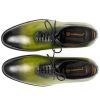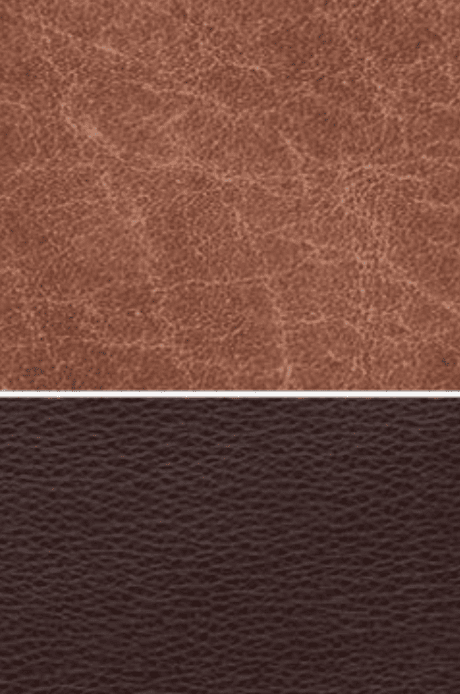Leather, in its various forms, has been an integral part of human civilization for centuries. From clothing to accessories, upholstery to industrial applications, leather has found its place in almost every aspect of our lives. However, with growing concerns about animal welfare, environmental sustainability, and ethical consumerism, alternatives to traditional leather have gained traction in recent years. In this comprehensive guide, we delve deep into the world of leather, comparing and contrasting synthetic, vegan, and real leather to understand their differences, benefits, and drawbacks.
Understanding Synthetic Leather
Synthetic leather, also known as faux leather or artificial leather, is a man-made material designed to mimic the look and feel of genuine leather without using any animal products. It is typically made from polyurethane (PU) or polyvinyl chloride (PVC) and can be produced in a variety of textures and colors.
Composition of Synthetic Leather
Polyurethane (PU) Synthetic Leather
Polyurethane synthetic leather is created by applying a layer of polyurethane to a fabric base, such as polyester or cotton. This coating is then embossed with a texture that resembles genuine leather grains, giving it a realistic appearance.
Polyvinyl Chloride (PVC) Synthetic Leather
PVC synthetic leather, on the other hand, is made by coating a fabric backing with layers of PVC resin and plasticizers. The surface is often treated with additives to enhance durability and flexibility.
Pros and Cons of Synthetic Leather
Pros:
- Affordability: Synthetic leather is generally more affordable than real leather, making it a budget-friendly option for consumers.
- Variety: It comes in a wide range of colors, textures, and finishes, offering versatility in design and style.
- Easy Maintenance: Synthetic leather is easy to clean and maintain, as it is resistant to stains and can be wiped clean with a damp cloth.
- Animal-Friendly: Since it is made from synthetic materials, no animals are harmed in the production process.
Cons:
- Durability: Synthetic leather tends to be less durable than real leather and may show signs of wear and tear over time.
- Breathability: It lacks the natural breathability of real leather, which can lead to discomfort, especially in hot and humid conditions.
- Environmental Impact: The production of synthetic leather involves the use of petrochemicals and may contribute to environmental pollution.
- Perception: Some consumers perceive synthetic leather as inferior to real leather in terms of quality and prestige.
Exploring Vegan Leather
Vegan leather, also known as plant-based leather or faux leather, is an animal-friendly alternative to traditional leather that is made from plant-based materials or recycled synthetic fibers. It offers a cruelty-free and eco-friendly option for conscientious consumers who want to avoid animal products.
Materials Used in Vegan Leather
Cork Leather
Cork leather is made from the bark of cork oak trees, which is harvested without harming the tree. It is lightweight, water-resistant, and has a unique texture that resembles genuine leather.
Piñatex
Piñatex is a sustainable alternative to leather made from pineapple leaf fibers. It is biodegradable, breathable, and offers a cruelty-free option for eco-conscious consumers.
Mushroom Leather
Mushroom leather, also known as mycelium leather, is produced from the root structure of mushrooms. It is renewable, biodegradable, and can be grown in a controlled environment.
Pros and Cons of Vegan Leather
Pros:
- Cruelty-Free: Vegan leather does not involve the use of animal products or by-products, making it a compassionate choice for animal lovers.
- Environmentally Friendly: It is often made from sustainable materials that have minimal impact on the environment, reducing the carbon footprint associated with leather production.
- Innovative: Vegan leather encourages innovation in material science and promotes the development of sustainable alternatives to traditional leather.
- Customizable: It can be produced in a variety of colors, textures, and finishes, offering versatility in design and style.
Cons:
- Durability: Some types of vegan leather may be less durable than real leather and may not withstand heavy use over time.
- Availability: While vegan leather is becoming more popular, it may still be less widely available than traditional leather products.
- Cost: High-quality vegan leather products can be expensive, especially those made from innovative materials or produced using sustainable methods.
- Perception: Despite its benefits, some consumers may still perceive vegan leather as inferior to real leather in terms of quality and longevity.
Real Leather: Tradition Meets Luxury
Real leather, also known as genuine leather or natural leather, is the traditional material made from the tanned hides or skins of animals, typically cattle. It has been prized for its durability, texture, and luxurious appearance for centuries.
Types of Real Leather
Full-Grain Leather
Full-grain leather is the highest quality leather available, as it retains the outer layer of the hide, known as the grain, which contains the strongest and most durable fibers. It develops a rich patina over time and is resistant to moisture and stains.
Top-Grain Leather
Top-grain leather is made by splitting the top layer of the hide and sanding away any imperfections. It is smooth and uniform in appearance, making it ideal for use in luxury goods and furniture.
Genuine Leather
Genuine leather is made from the layers of the hide that remain after the top grain has been removed. While it is still considered real leather, it is not as high quality as full-grain or top-grain leather and may be less durable.
Pros and Cons of Real Leather
Pros:
- Durability: Real leather is known for its durability and longevity, making it a wise investment for high-quality goods that are built to last.
- Luxury: It has a luxurious look and feel that cannot be replicated by synthetic or vegan alternatives, adding a touch of sophistication to any product.
- Breathability: Leather is a natural material that is breathable and comfortable to wear, making it ideal for clothing and accessories.
- Timeless Appeal: Leather products have a timeless appeal that transcends trends and fads, making them a classic choice for discerning consumers.
Cons:
- Cost: Real leather products are often more expensive than synthetic or vegan alternatives, reflecting the craftsmanship and quality of the material.
- Environmental Impact: The leather industry can have significant environmental impacts, including deforestation, water pollution, and greenhouse gas emissions.
- Ethical Concerns: Some consumers have ethical concerns about the use of animal products in leather production and prefer cruelty-free alternatives.
- Maintenance: Leather requires regular care and maintenance to keep it looking its best, including cleaning, conditioning, and protecting it from moisture and stains.
Conclusion
In conclusion, the choice between synthetic, vegan, and real leather ultimately depends on a variety of factors, including personal preferences, ethical considerations, and budget constraints. Each type of leather offers its













